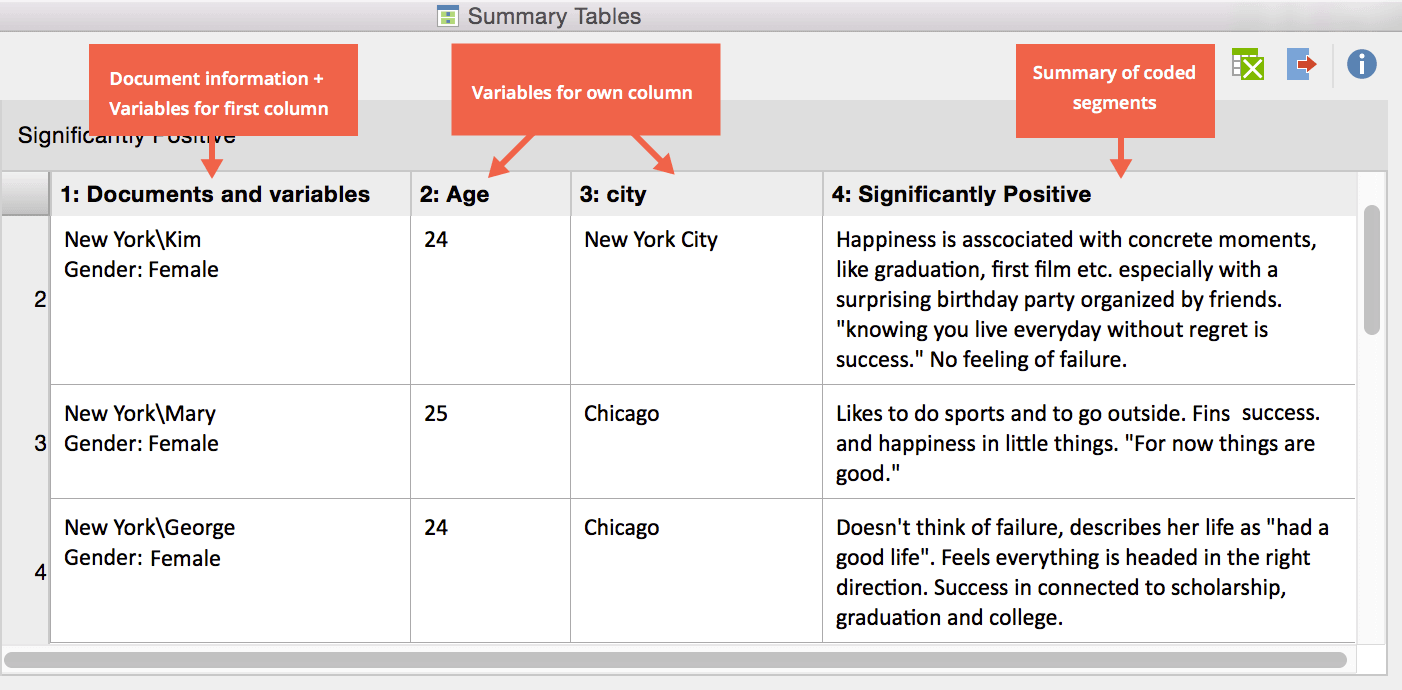
MAXQDA RESEARCH GRANTS CODE
I began by activating all “Method Preference” sub-nodes in my code system (see Image 2).Instead of trying to use more quantitative methods in the analysis, I took a qualitative approach to analyze the data, using MAXQDA’s Code Relations Browser to explore the differences between CP descriptions across genders. Table 1 – Willingness to pay space for Striga spp. socioeconomic differences between genders) or analyses. These disparate results could not be explained by other quantitative data (e.g. After several months of analyzing data from DCEs, it became evident that summary statistics and parametric tests were limited in explaining the difference between male and female participant decisions, especially in the willingness to pay space (see Table 1).įor example, men were willing to sacrifice 7.57% more losses in maize yield for CPs with lower labor requirements than women were willing to sacrifice for CPs with higher labor. Many times, when qualitative and quantitative methods are used separately to analyze farmer decisions, findings are not generalizable or do not highlight the context-specific nuances. Anticipating confounding results – MAXQDA Code Relations Browser to-the-rescue! Sequential mixed methods designs are useful when unexpected results arise and require further clarification, and during my analysis, unexpected results did arise. MAXQDA facilitated the employment of this sequential explanatory design orienting my instrumentation to explore confounding results. Then in the field, I inquired about CP preferences by using induction (or discovery of patterns), deduction (testing of theories and hypotheses), and abduction to uncover and use the best set of explanations for understanding results. knowledge and CP preferences in MAXQDA’s MAXMaps feature while running my regressions.

In this case, I analyzed different connections between Striga spp. Mixed method approaches often integrate two polarized methods simultaneously or in a sequential manner.


The experiment was organized by Timothy and a co-instigator Cyprian Mwale Image 1 – Striga asiatica emergence in a pot sown with a susceptible host (Zea mays). At the same time, household surveys were carried out to assess socioeconomic differences/similarities between CP implementers.Īfter data collection, a random parameter logistic regression (mixlogit) analysis estimated which attributes were significantly associated with CP decisions and which tradeoffs farmers were willing to make to implement CPs. DCEs were presented to smallholder farmers (cultivating less than 2ha) in the form of hypothetical scenarios, each having three CPs with five attributes at varying levels. Discrete choice experiments (DCEs) were composed based on these findings. Focus group transcripts were then imported into MAXQDA to determine which attributes emerged in discussions. I first facilitated focus group discussions to assess farmer knowledge about Striga, the control practices (CPs) they used to address the weed (see Image 1), and the attributes they considered before implementing a CP. I used a sequential explanatory design to organize my data collection and analysis.
MAXQDA RESEARCH GRANTS SOFTWARE
Highlighting gendered motives behind farming practices using MAXQDA, the ideal data analysis software for the mixed methodologist I mentioned in my second blog post that I would try to highlight and explain these differences using one of MAXQDA’s visual tools. One component of the research investigates how land tenure institutions, social relations, and other components of a political-economic environment affect Malawian farmers’ preferences for practices to control parasitic weeds ( Striga spp.).

This is my third and final fieldwork diary entry about analyzing data using MAXQDA software.


 0 kommentar(er)
0 kommentar(er)
